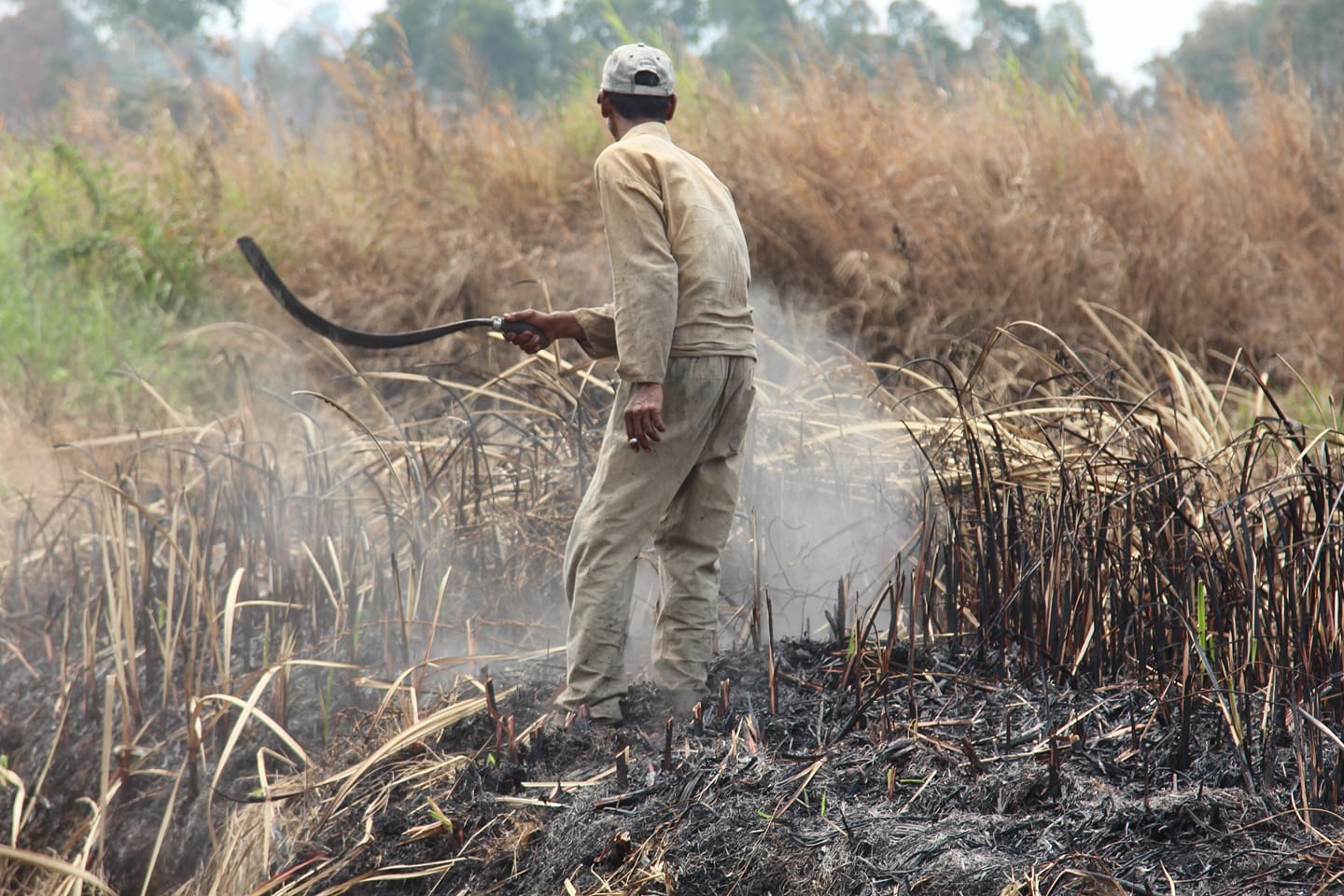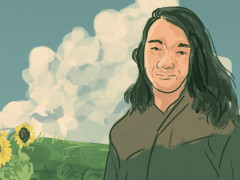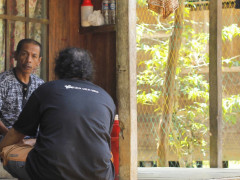Growing Amidst the Crisis
By Pantau GambutPeople at the Edge of Destiny
About the author: Budi Kurniawan is a journalist and contributor to Pantau Peatland in South Kalimantan.
This year, 40-year-old Subeli, a resident of Muning Dalam village in South Kalimantan, must hide his disappointment. The annual drought, which used to be long and predictable, is not what he expected.
Subeli doesn’t understand why seasonal changes happen so often lately in his village, surrounded by swamps and peatland. Long ago, at least several decades back, Subeli learned how to forecast the seasons from his late grandfather. This was very important for him and other local residents. By being aware of the seasons, they knew when to adjust the rhythm of their activities to support their families.
This year however, the drought lasted less than three months. It even rained occasionally during the dry season. In this village, which can only be reached by boat, more than three hours travel from the sub-district capital, the rain usually only falls in localized areas. Long ditches stretching across the village are not fully filled with water during localized rains. Some of the ditches prematurely dry out. "We suspect that this unusual seasonal change has something to do with land clearances for oil palm plantations, which are currently besieging our village," Subeli said.
Most of the residents rely on these ditches to make their living. In the ditches, there are many kinds of fish, including “snakehead fish” (so-called in the local Haruan language), betok, sepat, and catfish. In rainy seasons, when the water level is high, the ditches are inundated with water. During this time, Muning Dalam and other surrounding villages are very active, as if in the movie Waterworld starring Kevin Costner.
When the long drought comes, the ditches – owned by the residents and collectively managed – dry out. That is when the fish, which previously swam freely, are trapped in the ditches. After leaving the ditches for several months, at a designated time, the residents harvest the fish.
The fish harvest is performed collectively and in rotations. When residents finish their harvest, they’re expected to lend a hand to other residents harvesting their fish. The tradition of cooking rice and grilling fish for a shared meal at the end of the harvest has been in place since their ancestors lived in Muning Dalam and other villages in Hulu Sungai Selatan regency.
Before the harvested fish are taken to the house of the ditch owner, a portion is distributed to other residents who helped with the harvest. Sometimes, these distributions are quite large, depending on the total amount of fish harvested that year. A large ditch harvest can yield as much as 150 kilograms; a smaller-scale harvest may reach 50 kilograms per ditch.
The price of the harvested fish is quite reasonable. When it is an abundant harvest, 1 kilogram of snakehead fish sells for IDR 80,000–100,000 (approximately US$5.75–7.20) in village markets. This is a good price for the village residents. When multiplied by the total amount of fish harvested – say, 100 kilograms – at IDR 100,000 per kilogram, we see that residents could earn IDR 10 million (approximately $720) from just one ditch. Each family usually has more than five ditches worth of fish.
To sell their fish, residents do not need to travel far from the village. Buyers even come to them. Right away, they negotiate a price, buy the fish, and take it out of the village. Later, the remaining fish are sold off to various destinations, even to Banjarmasin, the capital of South Kalimantan province. In Banjarmasin and other areas of South Kalimantan, snakehead fish has become the main side-dish of Banjar traditional food such as yellow rice, lontong sayur (a rice cake with vegetables in coconut gravy), and ketupat kandangan (a rice cake weaved with coconut leaves).
None of these things seem to have happened this year. “This year, our fish harvest failed. We cannot even harvest the fish from the ditches. The drought is too short. Even now, the rain still falls. As a result, there is not enough time for the fish in the ditches to grow. Currently, our community is relying on the sale of galam firewood [timber that usually grows in swamp areas] to sustain ourselves,” says Muning Dalam resident Mang Arfan.
Due to the unfavorable situation in their village, Subeli and some other residents have had to leave. They are now renting a few meters of land for farming in Banjarbaru, a town far from their village, in hopes of making their fortunes. In Banjarbaru, they are growing Gumbili Nagara, a yam typical of the Hulu Sungai Selatan province.
Farming away from their hometown has created a new problem for Muning Dalam residents. In addition to dealing with the different characteristics of the soil, they also struggle with the cost of renting external land. “But, for the sake of providing for our wives, children, and families, we have to leave our village. Hopefully, in the near future, we can get loans from generous donors to help us cover the rent,” says Subeli.




